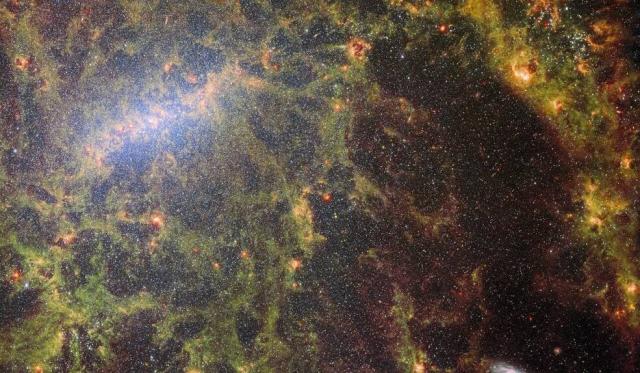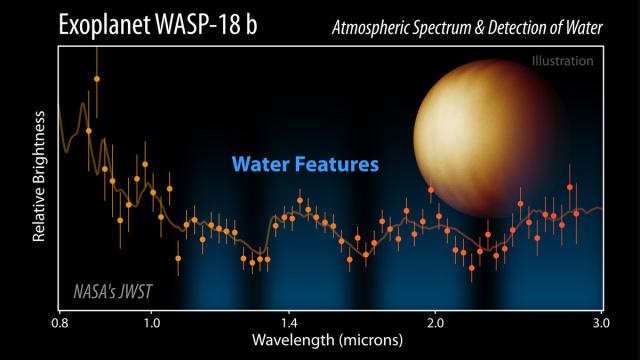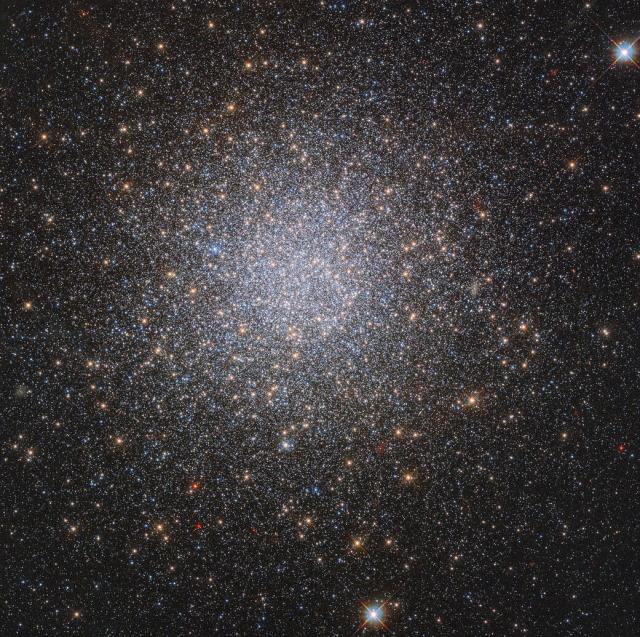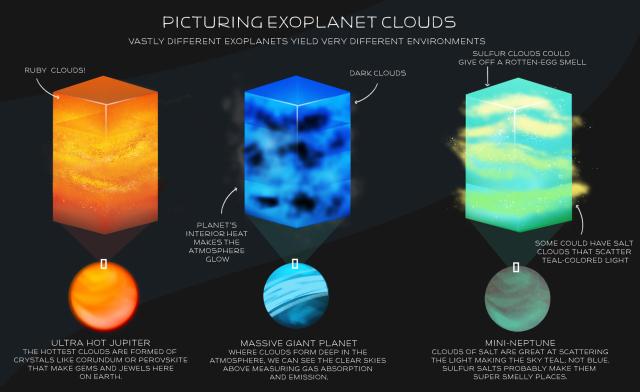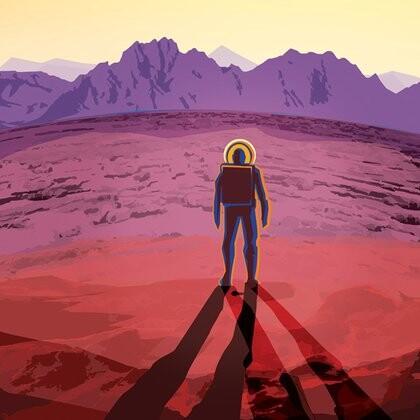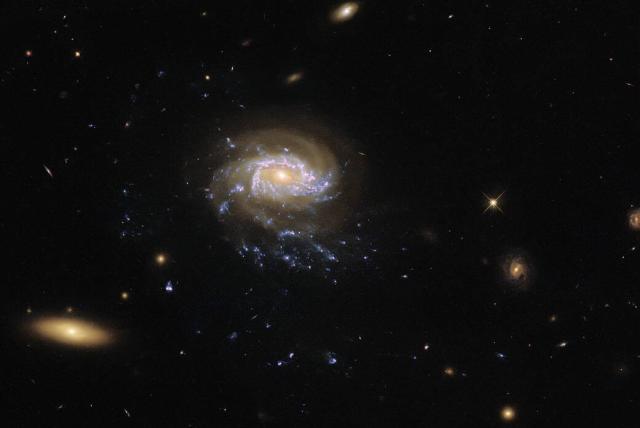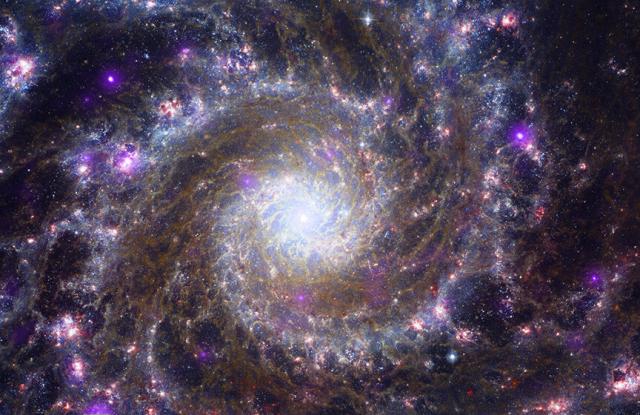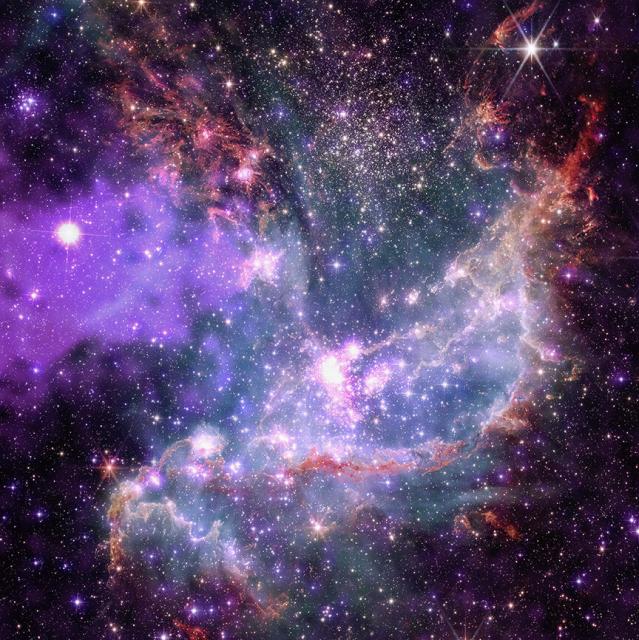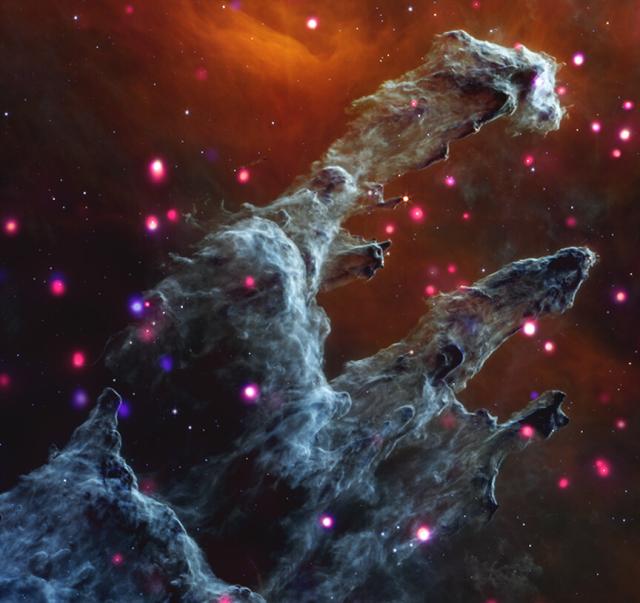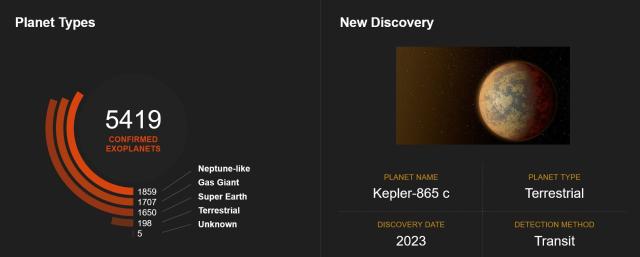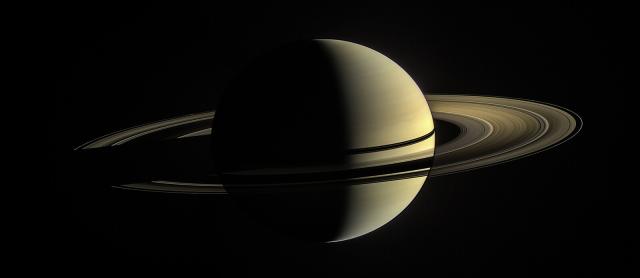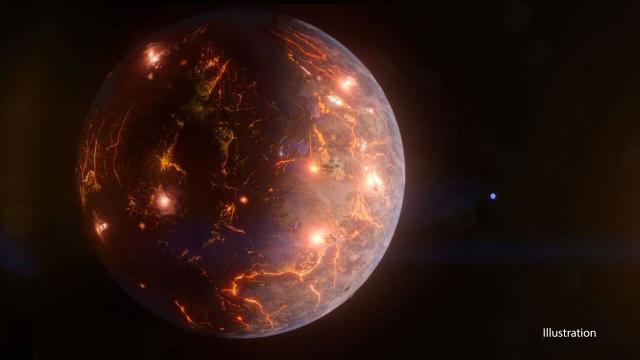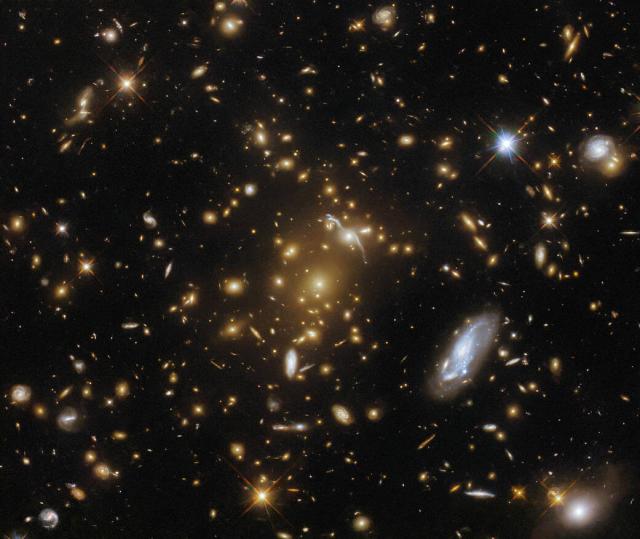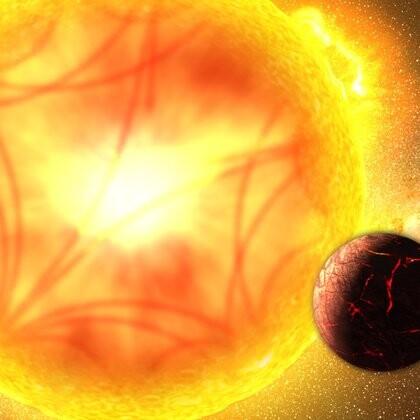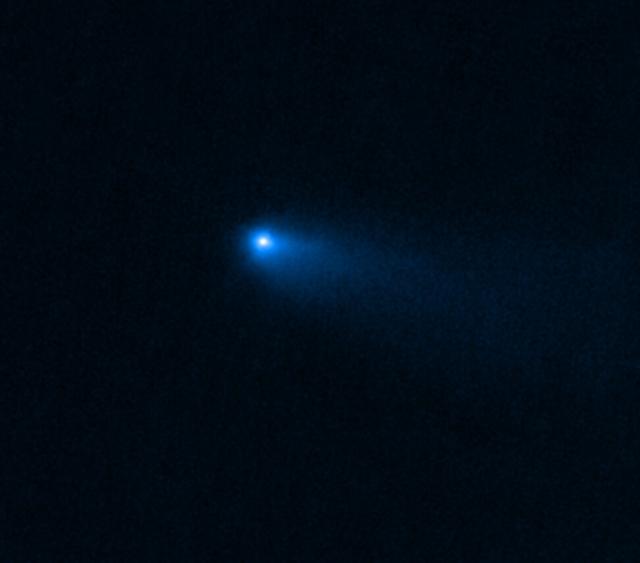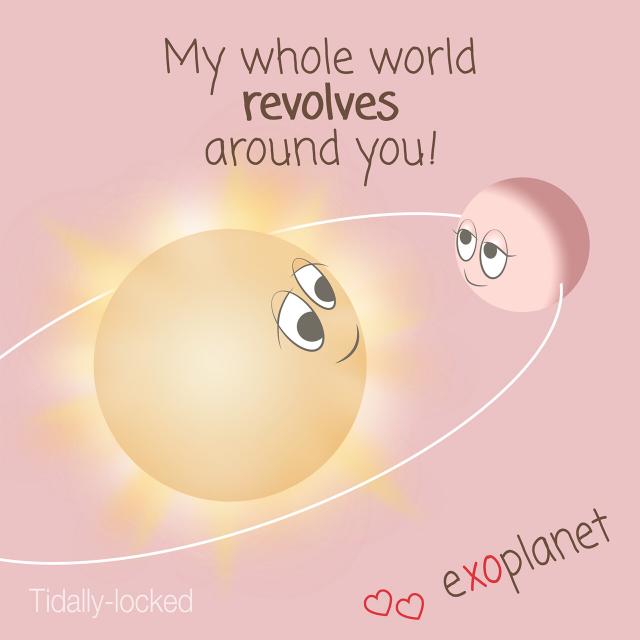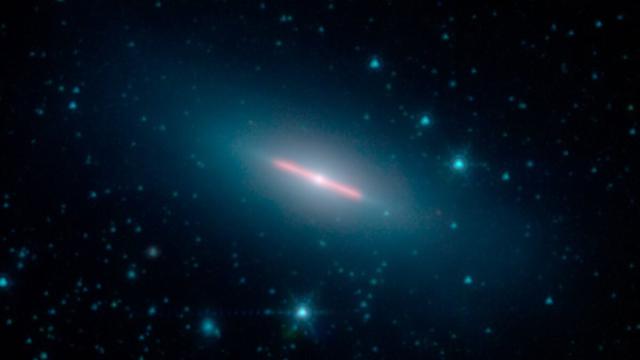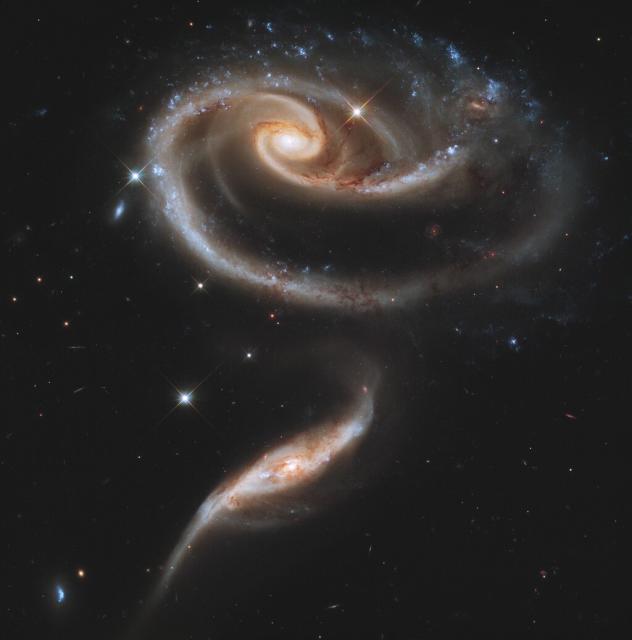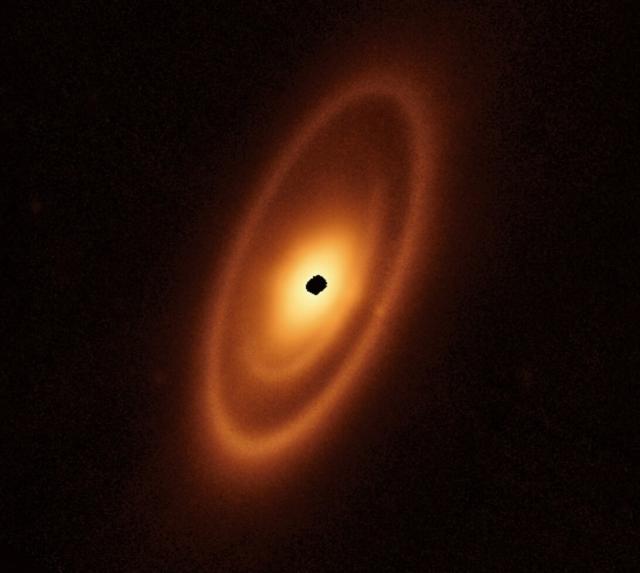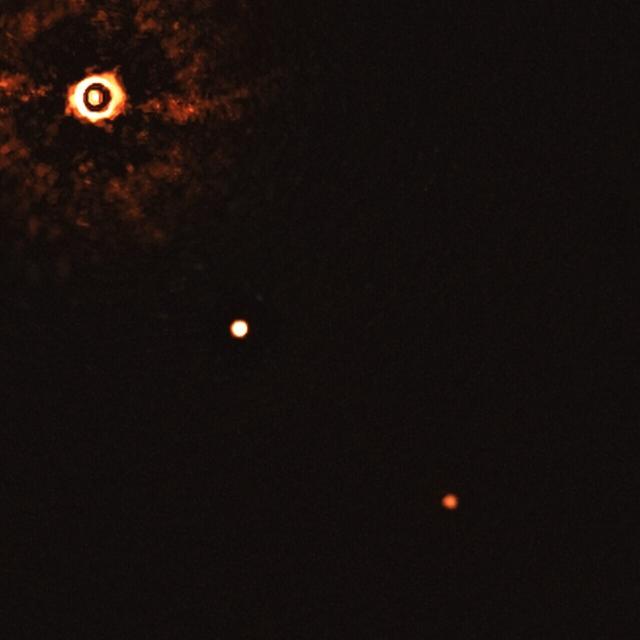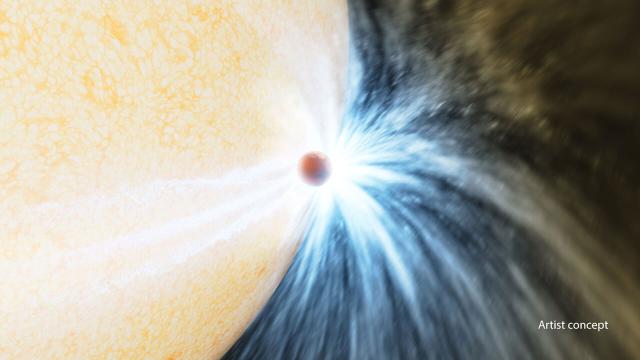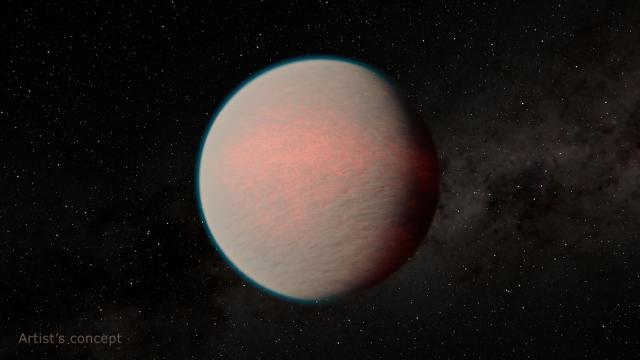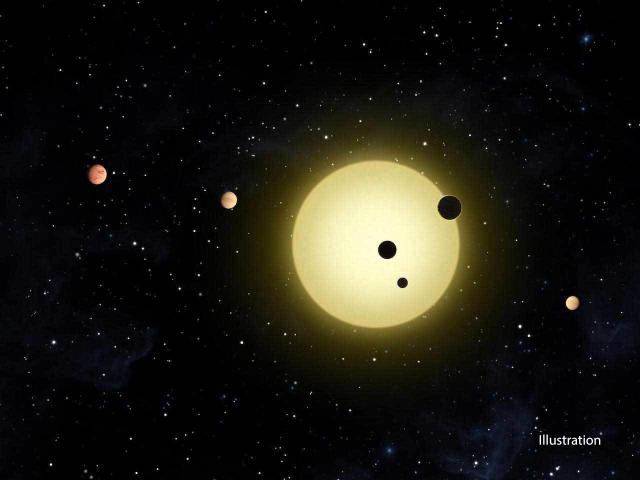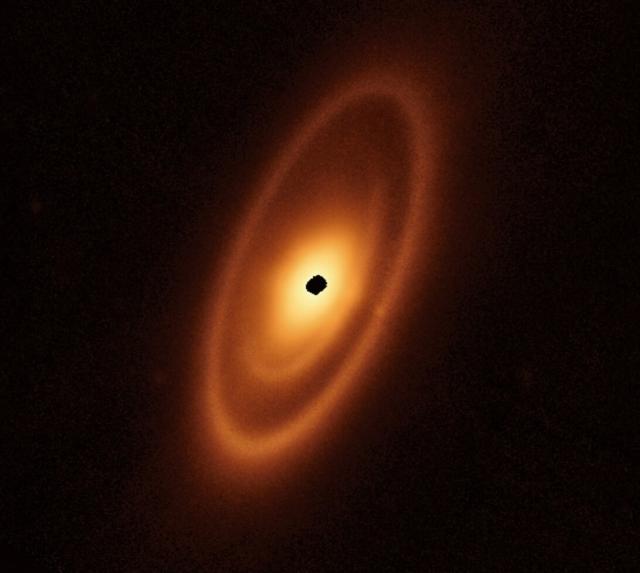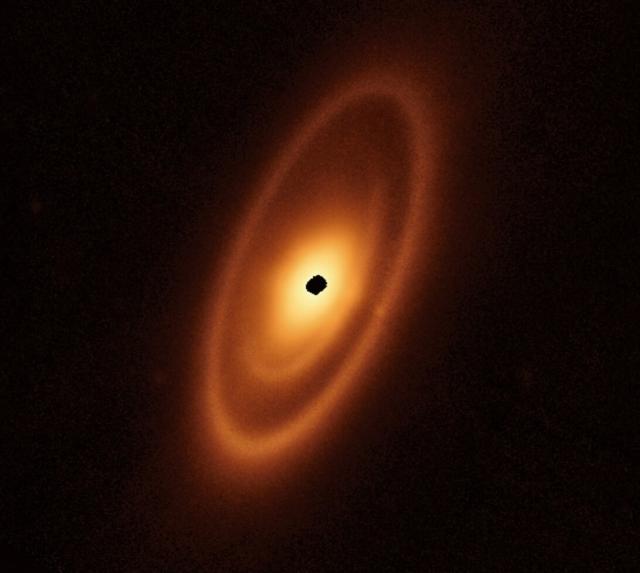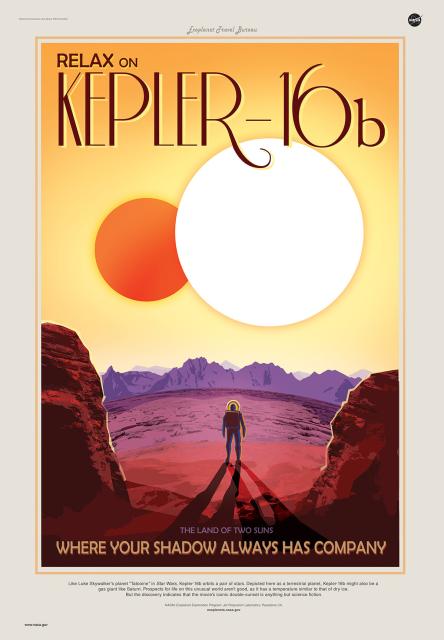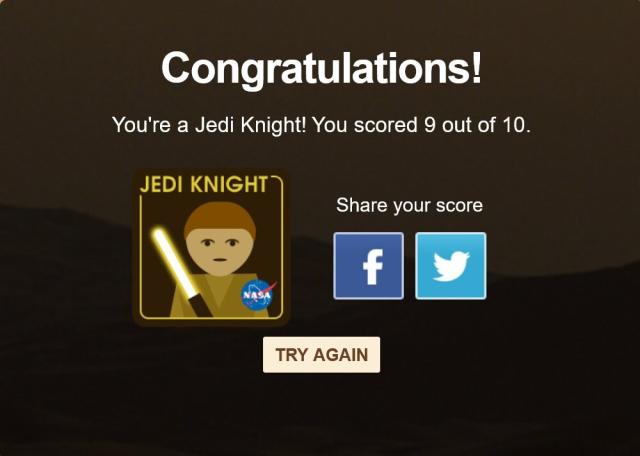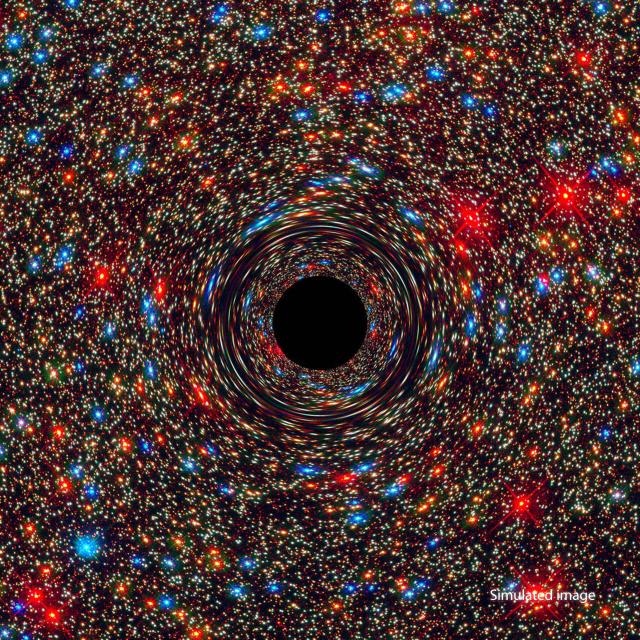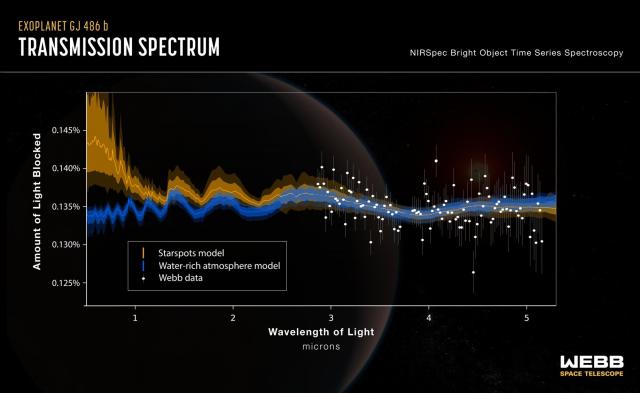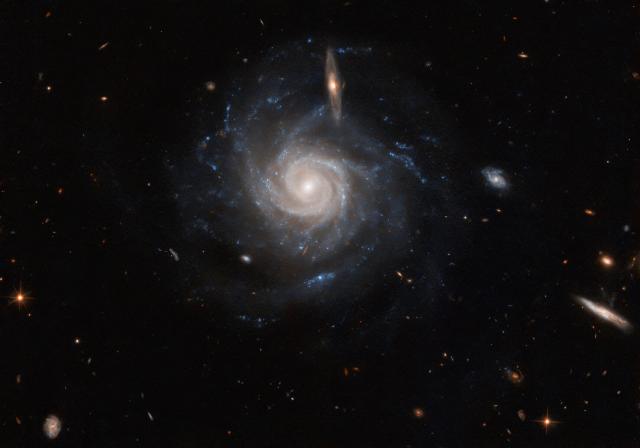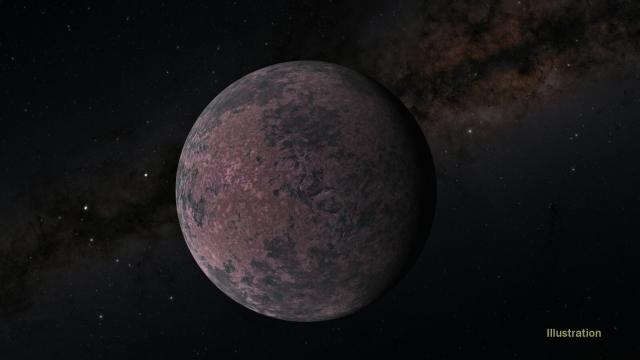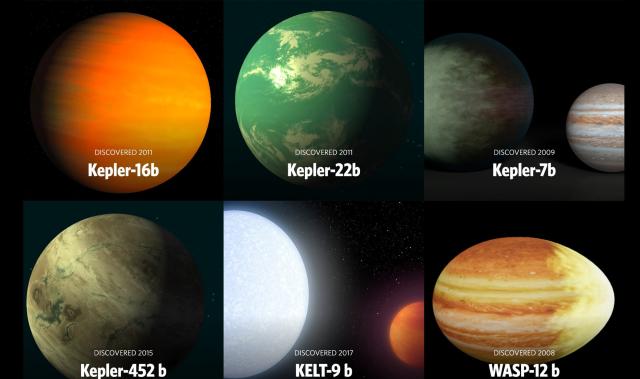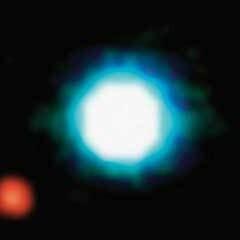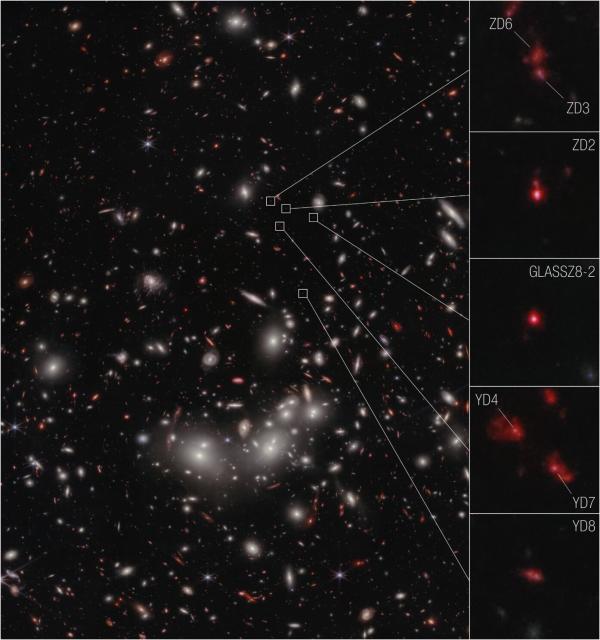Search
Items tagged with: NASAExoplanets
#NASAExoplanets
#NASAExoplanets
Discovery Alert: Webb Maps and Finds Traces of Water in an Ultra-hot Gas Giant's Atmosphere
Scientists used the Webb Telescope identified water vapor in the atmosphere of WASP-18 b, and made a temperature map of the planet as it slipped behind, and reappeared from, its star.Exoplanet Exploration: Planets Beyond our Solar System
#NASAExoplanets
Discovery Alert: Webb Maps and Finds Traces of Water in an Ultra-hot Gas Giant's Atmosphere
Scientists used the Webb Telescope identified water vapor in the atmosphere of WASP-18 b, and made a temperature map of the planet as it slipped behind, and reappeared from, its star.Exoplanet Exploration: Planets Beyond our Solar System
@NASAWebb viewed an exoplanet eclipse and made a brightness map of a well-known world. From these measurements, scientists mapped WASP-18 b's day side temperatures, showing a range of 2,800 to 4,800 degrees F (1,500 to 2,600 C). go.nasa.gov/42aAivX
#NASAExoplanets
Discovery Alert: Webb Maps and Finds Traces of Water in an Ultra-hot Gas Giant's Atmosphere
Scientists used the Webb Telescope identified water vapor in the atmosphere of WASP-18 b, and made a temperature map of the planet as it slipped behind, and reappeared from, its star.Exoplanet Exploration: Planets Beyond our Solar System
#NASAExoplanets
#NASAExoplanets
Exoplanet Clouds: 'Jewels' of New Knowledge
NASA's James Webb Space Telescope will take aim at exoplanet clouds, revealing secrets of their atmospheres.Exoplanet Exploration: Planets Beyond our Solar System
Check out our Exoplanet Travel Bureau: exoplanets.nasa.gov/travel/
#NASAExoplanets
Take a virtual trip with NASA
Book your trip to the imagined surfaces of planets outside our solar system, with NASA's interactive Exoplanet Travel BureauExoplanet Exploration: Planets Beyond our Solar System
Spiral galaxy Messier 74 is about 32 million light-years away. Here, @NASAWebb outlines gas and dust in infrared while @Chandraxray spotlights high-energy activity from stars. @NASAHubble shows additional stars and dust in visible light. go.nasa.gov/3Mz7Pds
#NASAExoplanets
NASA's Chandra, Webb Combine for Arresting Views
Four composite images deliver dazzling views from NASA's Chandra X-ray Observatory and James Webb Space Telescope of two galaxies, a nebula, and a star cluster.Lee Mohon (NASA)
A star cluster in the Small Magellanic Cloud, ~200,000 light-years away, glows with arcs of the material that stars and planets need to form. The purple cloud at left is the remains of a supernova explosion from a massive star. go.nasa.gov/3qdG8z5
#NASAExoplanets
NASA's Chandra, Webb Combine for Arresting Views
Four composite images deliver dazzling views from NASA's Chandra X-ray Observatory and James Webb Space Telescope of two galaxies, a nebula, and a star cluster.Lee Mohon (NASA)
#NASAExoplanets
72 planets were added to the known worlds, bringing our total to 5,419! Most of the new planets were detected with the help of @NASAAmes supercomputers & validated with new machine learning tools! More: go.nasa.gov/42YUKkC
#NASAExoplanets
New Deep Learning Method Adds 301 Planets to Kepler's Total Count
A new machine-learning method yields 301 new exoplanet discoveries from the retired Kepler Space Telescope.Exoplanet Exploration: Planets Beyond our Solar System
#MondayMotivation: The right time might just be now! go.nasa.gov/42ePyrL
#NASAExoplanets
Saturn’s Rings: Young and Ephemeral, Three NASA Ames Studies Say
Three recent studies by scientists at NASA’s Ames Research Center in California’s Silicon Valley examine data from NASA’s Cassini mission and provide evidence that Saturn’s rings are both young and ephemeral – in astronomical terms, of course.Abigail Tabor (NASA)
#NASAExoplanets
NASA’s Spitzer, TESS Find Potentially Volcano-Covered Earth-Size World
Astronomers have discovered an Earth-size exoplanet, or world beyond our solar system, that may be carpeted with volcanoes.Jeanette Kazmierczak (NASA)
#NASAExoplanets
Hubble Captures a Light-Bending Galaxy Cluster
A vast galaxy cluster lurks in the center of this image from the NASA/ESA Hubble Space Telescope.Andrea Gianopoulos (NASA)
#NASAExoplanets
Symphony of stars: The science of stellar sound waves
The stars are performing a concert as sound waves travel through them. Telescopes sensitive to stellar vibrations help scientists learn a lot about stars, as well as their planets.Exoplanet Exploration: Planets Beyond our Solar System
#NASAExoplanets
#NASAExoplanets
#NASAExoplanets
#NASAExoplanets
Webb Looks for Fomalhaut’s Asteroid Belt and Finds Much More
Astronomers used NASA’s James Webb Space Telescope to image the warm dust around a nearby young star, Fomalhaut, in order to study the first asteroid belt ever seen outside of our solar system in infrared light.Jamie Adkins (NASA)
#NASAExoplanets
Discovery Alert: See the Image – 2 Planets Orbit a Sun-like Star
Astronomers have captured a direct image of a multi-planet system around a Sun-like star, the first of its kind.Exoplanet Exploration: Planets Beyond our Solar System
Astronomers saw a flash in a sky survey, and found it again in infrared: the first direct observation of a star devouring a planet. Our Sun, and perhaps our planet, will face a similar fate in 5 billion years. go.nasa.gov/42fREYs
#NASAExoplanets
Caught in the Act: Astronomers Detect a Star Devouring a Planet
A star nearing the end of its life swelled up and absorbed a Jupiter-size planet. In about 5 billion years, our Sun will go through a similar end-of-life transition.Exoplanet Exploration: Planets Beyond our Solar System
#NASAExoplanets
NASA's Webb Takes Closest Look Yet at Mysterious Planet
New data from NASA's Webb space telescope reveals new details about a strange but common planet type, a 'mini-Neptune.'Exoplanet Exploration: Planets Beyond our Solar System
#NASAExoplanets
Discovery Alert: The Rhythmic Dance of a 5-planet System
A newly discovered system of at least five planets, and probably six, moves in gravitational harmony around a Sun-like star.Exoplanet Exploration: Planets Beyond our Solar System
#NASAExoplanets

Exoplanet Exploration: Planets Beyond our Solar System
NASA’s Exoplanet Exploration Program, the search for planets and life beyond our solar system.Exoplanet Exploration: Planets Beyond our Solar System
#NASAExoplanets
Webb Looks for Fomalhaut’s Asteroid Belt and Finds Much More
Astronomers used NASA’s James Webb Space Telescope to image the warm dust around a nearby young star, Fomalhaut, in order to study the first asteroid belt ever seen outside of our solar system in infrared light.Jamie Adkins (NASA)
#NASAExoplanets
Webb Looks for Fomalhaut’s Asteroid Belt and Finds Much More
Astronomers used NASA’s James Webb Space Telescope to image the warm dust around a nearby young star, Fomalhaut, in order to study the first asteroid belt ever seen outside of our solar system in infrared light.Jamie Adkins (NASA)
#NASAExoplanets
Earth-sized 'Tatooine' planets could be habitable
A new study explores potential climates of a planet orbiting two suns.Exoplanet Exploration: Planets Beyond our Solar System
#NASAExoplanets
Take a virtual trip with NASA
Book your trip to the imagined surfaces of planets outside our solar system, with NASA's interactive Exoplanet Travel BureauExoplanet Exploration: Planets Beyond our Solar System
#NASAExoplanets
Meet 8 'Star Wars' Planets in Our Own Galaxy
The fantastical planets in Star Wars preceded our discovery of real planets outside our solar system...but the facts aren't far from fiction.Exoplanet Exploration: Planets Beyond our Solar System
#NASAExoplanets
Star Wars: Fact or Fiction?
Do you know more about the Milky Way, or a galaxy far, far away? Test your knowledge and discover if you're a Padawan … or a Jedi Master.go.nasa.gov
#NASAExoplanets
Caught in the Act: Astronomers Detect a Star Devouring a Planet
A star nearing the end of its life swelled up and absorbed a Jupiter-size planet. In about 5 billion years, our Sun will go through a similar end-of-life transition.Exoplanet Exploration: Planets Beyond our Solar System
Find your flair: go.nasa.gov/3LoSFGT
#NASAExoplanets
Basics | Black Holes – NASA Universe Exploration
A black hole is so dense that gravity just beneath its surface, the event horizon, is strong enough that nothing – not even light – can escape. The event horizon isn’t a surface like Earth’s or even the Sun’s.NASA Universe Exploration
Most galaxies, like our Milky Way, have black holes at their centers. This computer-simulated image shows what that might look like. In the center is the black hole’s event horizon, where no light can escape.
go.nasa.gov/44jHlVs
#NASAExoplanets
Basics | Black Holes – NASA Universe Exploration
A black hole is so dense that gravity just beneath its surface, the event horizon, is strong enough that nothing – not even light – can escape. The event horizon isn’t a surface like Earth’s or even the Sun’s.NASA Universe Exploration
#NASAExoplanets
Webb Finds Water Vapor, But From a Rocky Planet or Its Star?
Astronomers used NASA’s James Webb Space Telescope to study a rocky exoplanet known as GJ 486 b, and their observations using Webb’s Near-Infrared Spectrograph (NIRSpec) show hints of water vapor.Jessica Evans (NASA)
#NASAExoplanets
#NASAExoplanets
Hubble Spotlights a Swirling Spiral
The barred spiral galaxy UGC 678 takes center stage in this image from the NASA/ESA Hubble Space Telescope.Andrea Gianopoulos (NASA)
#NASAExoplanets
Discovery Alert: Ultra-hot 'Super-Earth' Could Have No Atmosphere
A new study of the "super-Earth" GJ 1252 b shows that the planet likely has a very minimal atmosphere or, possibly, no atmosphere at all.Exoplanet Exploration: Planets Beyond our Solar System
#NASAExoplanets
Strange New
A world with two suns, a lava world and an "Earth cousin" are just some of the exoplanets we've discovered.Exoplanet Exploration: Planets Beyond our Solar System
#NASAExoplanets
Observing Exoplanets: What Can We Really See?
Exoplanets are far away, and they are often obscured by the bright light of the stars they orbit. So, taking pictures of them the same way you'd take pictures of, say, Jupiter or Venus, isn't easy.Exoplanet Exploration: Planets Beyond our Solar System
#NASAExoplanets
Webb Reveals Early-Universe Prequel to Huge Galaxy Cluster
NASAs James Webb Space Telescope has confirmed, for the first time, a protocluster of seven galaxies at a distance that astronomers refer to as redshift 7.9, or a mere 650 million years after the big bang.Isabelle Yan (NASA)
